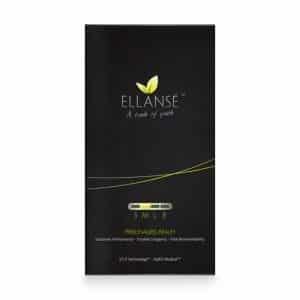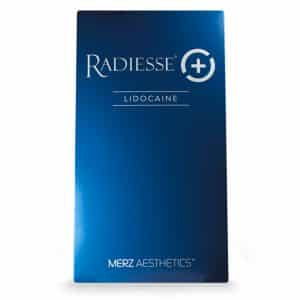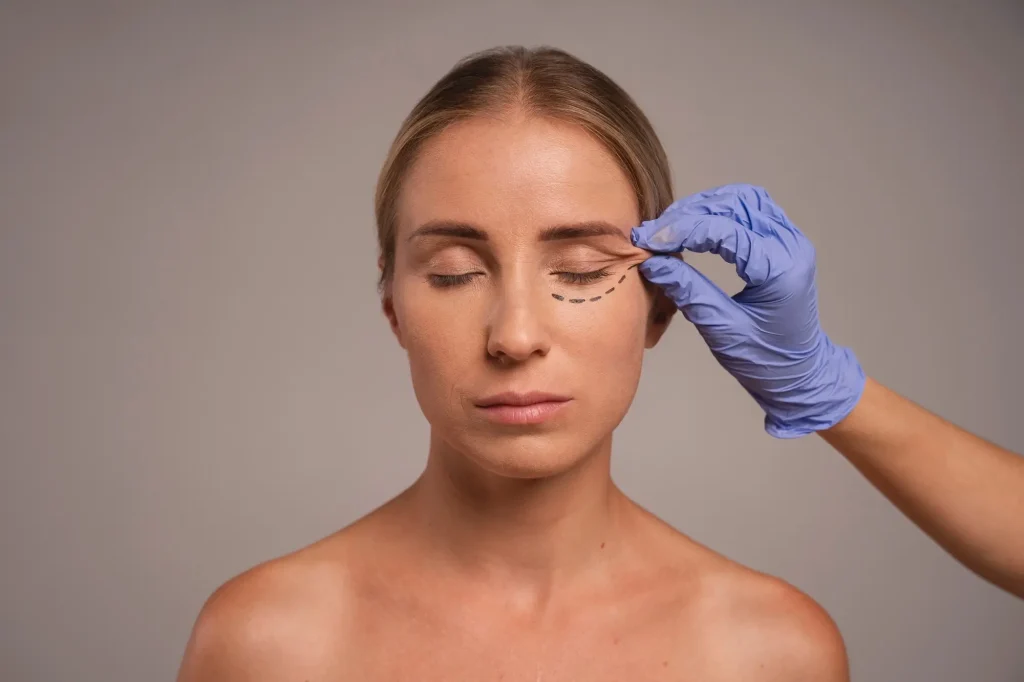Ellanse and Radiesse are two leading products in the world of dermal fillers. Ellanse is renowned for its dual-action formula that provides immediate volume and stimulates natural collagen production for long-term benefits. Radiesse, on the other hand, is favored for its immediate plumping effects and ability to improve skin structure over time.
In this article, we will thoroughly compare Ellanse and Radiesse, examining their compositions, benefits, and potential drawbacks to help you decide which filler best suits your needs.
Key Takeaways
- Ellanse uses polycaprolactone (PCL) microspheres to stimulate collagen production, resulting in long-lasting effects of up to four years. Radiesse utilizes calcium hydroxyapatite (CaHA) microspheres, promoting collagen growth and enhancing skin quality.
- Ellanse is known as the world’s longest-lasting filler, maintaining its effectiveness for up to 4+ years, while Radiesse typically offers results that last between one to two years.
- Ellanse is not reversible with hyaluronidase, but there have been no reported cases of blindness due to vascular occlusion. Common side effects include redness, swelling, bruising, and lumps. Radiesse also has side effects like pain, swelling, and redness but can be used in multiple body areas.
- Ellanse is ideal for facial treatments, providing long-lasting anti-aging effects. At the same time, Radiesse is versatile and suitable for face, neck, hands, and body contouring, making it a comprehensive rejuvenation option.
Composition and Mechanism of Action

Ellanse uses polycaprolactone (PCL) microspheres to stimulate collagen production. These tiny particles act as a scaffold, promoting the body’s natural collagen synthesis. This process, known as neocollagenesis, helps restore skin firmness and elasticity, leading to a youthful appearance.
Unlike other fillers, Ellanse is not dissolvable, ensuring long-lasting results. Its effects can last up to four years, providing a natural look and feel.
On the other hand, Radiesse distinguishes itself with calcium hydroxylapatite (CaHA) microspheres suspended in a gel carrier. Approved by the FDA for various uses, including facial, neck, and hand treatments, and even acne scar enhancement, Radiesse offers immediate volume and stimulates collagen production.
It seeds the body to produce new collagen, providing sustained support and structure. This results in a naturally youthful look as the skin improves in texture and firmness over time.
Clinical Efficacy

Ellanse and Radiesse are popular dermal fillers known for enhancing skin texture and volume through collagen stimulation. Ellanse is renowned as the world’s longest-lasting filler, maintaining its effectiveness for up to four years. In contrast, Radiesse typically offers results lasting between one and two years. This difference stems from their distinct compositions and mechanisms of action.
Ellanse utilizes polycaprolactone (PCL) microspheres, which stimulate the body’s natural collagen production and result in smoother and younger-looking skin. Radiesse, on the other hand, incorporates calcium hydroxylapatite (CaHA) microspheres, which promote collagen production but have a shorter duration of effectiveness.
A notable feature of Radiesse is its versatility. It can be used on the face, neck, hands, and body, and even for treating acne scars through hyper-dilution. This versatility makes Radiesse a preferred choice for comprehensive rejuvenation beyond facial contouring alone.
Studies highlight the effectiveness of both fillers in enhancing skin texture and volume. However, Ellanse stands out for its longevity, maintaining results for up to four years, surpassing Radiesse’s one-to-two-year effectiveness.
Safety Profiles

Both Ellanse and Radiesse are generally well-tolerated by patients, but they can cause some common side effects. For Ellanse, these typically include:
- Redness: Mild redness at the injection site is common and usually resolves within a few hours to a few days.
- Swelling: Patients often experience swelling in the treated area, which subsides within a few days.
- Bruising: Bruising can occur around the injection site and usually fades within a week.
- Pain: Some discomfort or tenderness at the injection site is normal but should diminish quickly.
Similarly, Radiesse can cause the following common side effects:
- Redness: Redness at the injection site that typically resolves within a few hours.
- Swelling: Swelling is common and usually decreases within a few days.
- Bruising: Bruising around the injection site is expected and typically resolves within a week.
- Pain: Mild to moderate pain at the injection site may occur but generally subsides quickly.
Rare Complications
While rare, there are potential complications associated with both Ellanse and Radiesse that medical professionals need to be aware of:
For Ellanse:
- Granulomas: These are small, hard lumps that can form under the skin due to the body’s reaction to the filler. They can occur months or even years after the injection and may require medical treatment.
- Infections: Although uncommon, infections at the injection site can occur and may need antibiotic treatment.
- Nodules: Formation of nodules, or firm bumps under the skin, can happen and may need additional treatment if persistent.
For Radiesse:
- Granulomas: Similar to Ellanse, Radiesse can also cause granulomas, which may need medical intervention.
- Infections: Infections at the injection site are rare but possible and require antibiotics.
- Vascular Complications: Though extremely rare, inadvertent injection into blood vessels can lead to serious complications like tissue necrosis or blindness, necessitating immediate medical attention.
Ensuring patient safety involves thoroughly understanding these potential side effects and complications. Proper patient selection, skilled injection techniques, and comprehensive aftercare instructions are crucial for minimizing risks and achieving optimal outcomes.
Practical Considerations
Ellanse and Radiesse offer effective solutions for different treatment areas, enhancing facial aesthetics and addressing signs of aging.
- Ellanse is primarily used for facial volume restoration, contouring, and correcting wrinkles and folds. It is particularly effective for treating areas like the cheeks, nasolabial folds, and temples.
- In contrast, Radiesse addresses facial wrinkles and volume loss and is also FDA-approved for hand rejuvenation, making it a versatile option for comprehensive anti-aging treatments.
Patient Satisfaction and Overall Experience
Patient satisfaction with both fillers is generally high, with many appreciating the natural-looking results and the boost in skin quality.
- Ellanse stands out for its longer-lasting effects, with results that can persist for up to four years, thus reducing the frequency of touch-up sessions. For patients having trouble choosing between popular fillers like Radiesse or Ellanse vs Juvederm, it’s important to note that Ellanse’s effects might influence patient preference based on how often they are willing to undergo treatments.
- Radiesse, while typically lasting one to two years, offers the advantage of immediate volumizing effects and a smoother transition for those who might be apprehensive about longer-term commitments.
Cost Comparison
The cost of treatment is a significant factor for many patients. Ellanse treatments might appear more expensive initially due to their long-lasting results, potentially justifying the upfront cost over time with fewer maintenance sessions needed.
Radiesse treatments are usually more affordable per session but may require more frequent touch-ups to maintain the desired look, which can add to the overall cost in the long run.
Conclusion
Ellanse and Radiesse bring their strengths to the table, offering unique benefits. Ellanse stands out for its long-lasting results and cost-effectiveness over time. On the other hand, Radiesse provides versatility in application beyond facial treatments.
Both fillers promise improved skin texture and volume, backed by expert reviews. Choosing between them depends on individual needs, treatment areas, and desired longevity of results.
FAQs
1. What’s the difference between Ellanse and Radiesse?
Ellanse and Radiesse are both popular fillers, but they have fundamental differences. While both are injectable dermal fillers used to reduce wrinkles and fine lines, their composition varies, leading to different effects on the skin.
2. Which one lasts longer: Ellanse or Radiesse?
The longevity of these fillers can vary depending on individual factors. However, in most cases, Ellanse lasts longer than Radiesse.
3. Are there any side effects I should know about with Ellanse and Radiesse?
Like all medical treatments, Ellanse and Radiesse have potential side effects. You might experience temporary redness, swelling, or bruising at the injection site for either product.
4. How do I choose between Ellanse and Radiesse?
Both products have pros and cons. Before making this decision, consider your personal needs and consult with a trusted professional who knows your skin type well.
References
Bharti G, Marks MW, David LR. Patient satisfaction with dermal fillers and effect on utilization of invasive aesthetic treatment modalities at a university-based cosmetic center. European Journal of Plastic Surgery. 2010;34(3):155-160. doi:10.1007/s00238-010-0494-5
Dermal Fillers Reviews | Was it Worth It? | RealSelf. RealSelf.com. Published July 6, 2024. https://www.realself.com/reviews/dermal-fillers





















